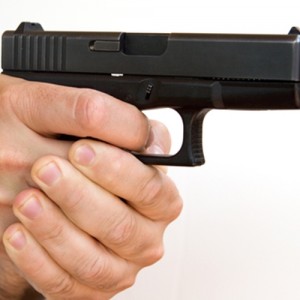Guns Make Killing Easy
Guns Make Killing Easy
I am sitting here, in my only orange shirt, in observation of National Gun Violence Awareness Day, and my thoughts turn to the New York Times’ remarkable recent study of 358 shootings last year in which four or more people were killed or wounded. As the Times noted, these were not the high-profile mass shootings in unlikely places like schools, churches and movie theatres that capture national attention, but rather “a pencil sketch of everyday America at its most violent.” The Times’ reporters penetrated beyond the body count to describe the circumstances of these shootings, in which 462 died and over 1300 were injured. The scenarios were varied, but the terrifying descriptions point to a conclusion common to all: if no guns were available, violence may have ensued, but countless lives would have been saved and serious injuries avoided.
Typically, the violence was sparked by the most banal of offenses, like one person shoving another in a bar, or a Facebook taunt, or a disagreement over the music at a house party. They occurred mostly outdoors, at virtually any place groups of people gather; at neighborhood barbecues, family reunions, music festivals, basketball tournaments, Sweet 16 parties, public parks. Only about one-third were gang-related or were drive-by shootings typical of gang violence. Even those that were gang-related were prompted, not by criminal activity like drug dealing, but by eruptions begun by a boast, an insult or some other sign of disrespect. Take the guns out of the picture, even if the combatants had been armed with other weapons, like knives or baseball bats, there is no doubt countless lives would have been spared.
The gun lobby gets much mileage from the slogan, “Guns don’t kill people, people kill people.” The Times’ study shows how far this idea is divorced from the brutal reality of everyday gun violence, particularly in our inner cities. The truth is that “Guns don’t kill people, they enable people to kill people,” more effectively and efficiently than any other widely available weapon. Even grossly incompetent shooters can be multiple killers. In one shooting at a Cincinnati Elks Lodge, according to police officials, as many as half of the 24 victims were not the intended targets. The perpetrators of such shootings are often high on drugs or alcohol. Some barely know how to hold a gun, yet it gives them lethal power over whoever crosses their field of fire. In the shootings surveyed, more than 100 bystanders were killed or wounded, including a 10-year-old boy who was struck in the eye as he peered out his window at a fracas in an Orlando, Florida housing project, a soldier struck by a stray bullet during a shootout in a public square in Savannah, Georgia and a 19-year-old college sophomore killed when a gunman sprayed a crowd outside an Ocala, Florida club. It is the gun that affords this kind of indiscriminate killing power; few are killed by stray knives or baseball bats. Put simply, guns make killing easy.
The National Rifle Association and its allies will insist that no laws will prevent dangerous people from getting guns, invoking the bumper sticker slogan that “When guns are outlawed, only outlaws will have guns.” Yet we know that every gun used in those multiple shootings started out in the legal gun market and that even modest regulation of the legal market can help to deny violent individuals access to guns. As I argue in my forthcoming book, Guns Don’t Kill People, People Kill People and Other Myths About Guns and Gun Control (Beacon Press, publication date August, 2016), when the Brady Law background checks began in 1994, there was an immediate and substantial drop in the percentage of violent crimes that involved guns, inaugurating a long-term decline in gun crimes and homicides. Moreover, we know that other high-income nations have violent crime rates similar to ours, but their homicide rates are a fraction of the U.S. rate because their strong gun laws deny violent individuals in those countries easy access to guns. To the extent that lethal gun crime continues to plague our communities, it is due, not to the futility of all gun laws, but rather to the weaknesses of U.S. gun laws. For example, Brady background checks, now required only for sales by licensed gun dealers, should be extended to all gun sales.
Before the end of National Gun Violence Awareness Day, there likely will be at least one shooting involving four victims or more; in all, today between 250 and 300 Americans will be killed or injured with firearms. We simply cannot afford to continue to allow the simple-minded slogans of the gun lobby to dictate national gun policy.
Follow Dennis A. Henigan on Twitter: www.twitter.com/DennisHenigan
How We Can Help
If you, a friend or a family member find themselves in a situation such as this, please call the Law Office of Scott A. Ferris, P.A. at 305 670-3330 right away. Scott A. Ferris, Esq. is a licensed attorney who has been practicing law since 1987. He is available whenever you need him to defend your rights. Please learn about our firm at www.FerrisLawFirm.com.
Republished by the Law Office of Scott A. Ferris, P.A.

